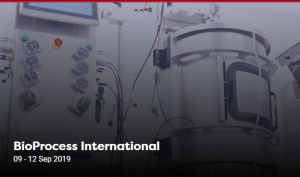Viral safety in cell and gene therapies with Thomas R. Kreil, VP at Takeda

In this exclusive interview for BPI TV, Thomas R. Kreil, Vice President of Global Pathogen Safety at Takeda, discusses the new challenges to viral safety that cell and gene therapies present and how new technologies are helping overcome them.
Here at the conference, there’s a whole stream on viral safety - why is that? Some people would say that’s a concern of the past?
You’re quite right - that is, in some ways, the unfortunate reality because the real problems that we’ve had with biomedical interventions date back to the eighties. At that time there were virus transmissions because at that time a lot of people didn’t even know that there were viruses out there.
With the advent of recombinant medicinal products, some of these issues have been eliminated, yet we have seen that some of the biofermenters were infected by viruses. Fortunately, the viruses did not reach the recipient, so patients were safe from that perspective, but supply was wiped out for long periods of time, and lack of treatment is a concern for patients as well.
Ever since, the community has learned a lot. We have implemented what is called ‘the safety tripod’. That’s a combination of first selecting the right material to start with. The second thing is the testing - we’re right now leaping into deep sequencing and next generation sequencing. It’s going to allow us to detect better at what we’re up against - in a more agnostic way we don’t need to know about the specific viruses. And finally, most importantly, virus inactivation and removal in the downstream.
So now we do know how we can keep patients safe and that’s why people are losing the focus. The good thing is, here we have all the attention on it, because now as we are going into the advanced therapy medicinal products, we must not forget these learnings of the past. We need to make use of what we have learned and keep patients safe with these new therapies.
How have you been involved in viral safety?
I have been involved in viral safety for the last two decades. Ever since I joined the Takeda organisation, I have spent my time paid by the company but in reality working for the patients who depend on us to keep them safe.
We have set to the ground here in Vienna an industry-leading, state-of-the-art biocontainment lab, that allows us to work with all the viruses you can possibly think of (with the one exception of Ebola virus) combined with our process expertise, where we can replicate all of our manufacturing processes that we run anywhere within the global network of Takeda.
With that, we can actually evaluate the processes for their capacity to inactivate or remove viruses. That’s why we’ve established a very good accord with patient organisations and regulatory bodies alike.
 | Over 2000 biopharm scientists, engineers and executives will be gathering in Boston for BioProcess International September 9-12, 2019. Explore the agenda or book your pass here. | |
|---|---|---|
What trends are in the area and where do you see it going?
Right now, we see the area in a rather transformative moment. I mentioned earlier the virus inactivation and virus removal processes we’ve developed for the downstream - but for some of the cell and gene therapies, that will not be possible because they’re living cells, they’re infectious viruses and we need to keep them so [that] they’re effective. That is why now the virus reduction moves into the upstream to become a viral barrier - and that’s a very new concept.
As I mentioned earlier too, the testing ability is going towards next generation sequencing where we can be totally agnostic about what we want to see and still are able to, in a very sensitive fashion, see what is out there.
This interview was filmed for BPI TV at BioProcess International Europe in April 2019.
RELATED ARTICLE: Cell and Gene Therapies: Viral and Non-Viral Vector Manufacturing - WHITEPAPER